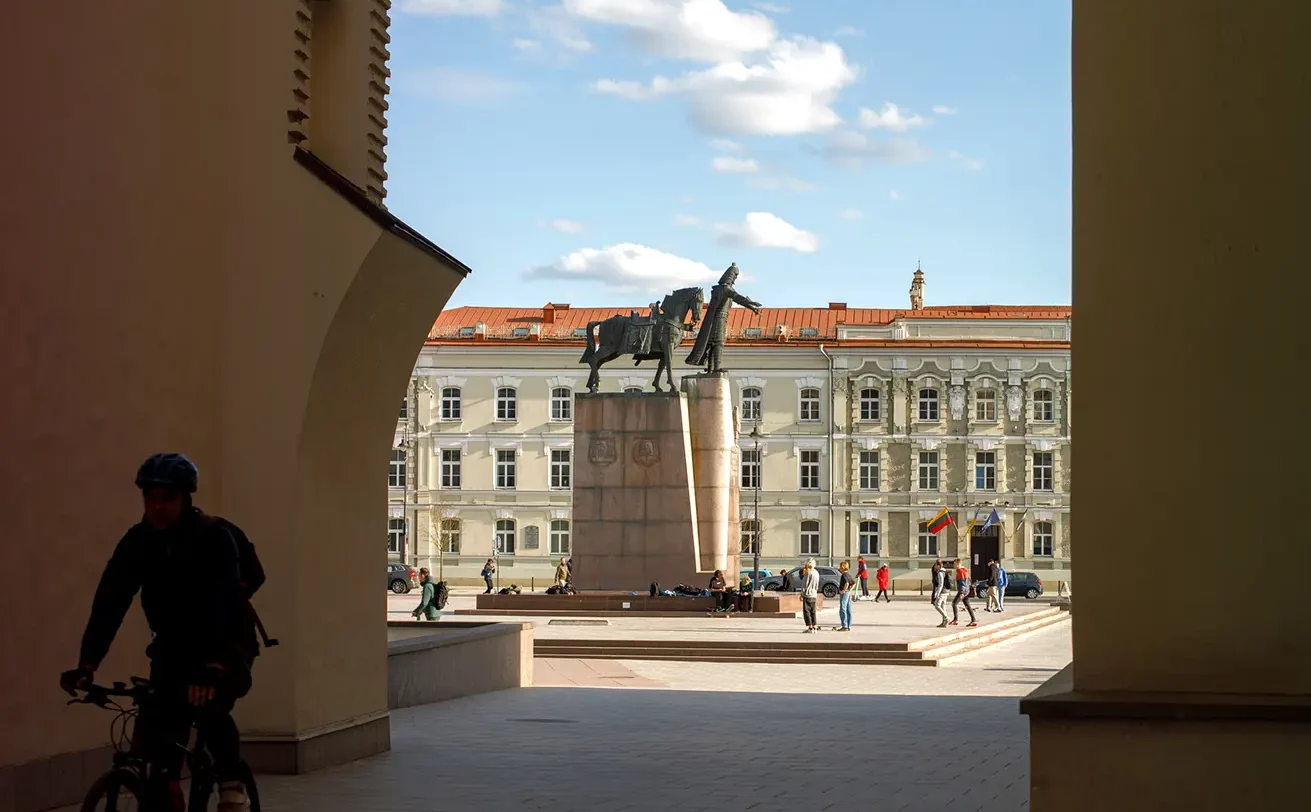The history of settlement in the area of today’s Lithuania takes us back to at least 9000 BC. Of course, the tales of those days can be told only by archaeological findings. These remind us of the Indo-European group of Baltic people (Balts), who gave the beginning to the present-day Baltic States. Early peoples of Lithuania may be narrowed down to those sharing the Brushed Pottery Culture (the name pretty much says it all).
Archeological findings suggest that when those tribes arrived in ca. 2000 BC, they were in a pretty luxurious situation, as the earlier Neolithic settlers established trade links for amber sales. The amber gathering in those lands was so important that the Romans mentioned it in 98 AD in their rather voluminous account of the German tribes (creatively entitled Germania). Yes – the Romans have been here too!
Long time, no state
The first record of Lithuania (Lituae) comes from a 1009 source in the Story of Saint Bruno (part of the Annals of Quedlinburg). However, Lithuania did not form a homogenous state until the late 12th century. Until then, it was a land divided into many tribes, or little dukedoms, if you like. Ruled by kunigasi, not much can be said for sure about the organization of these administrative bodies. What is known, and dictated by common sense, is that they made alliances and fought their enemies for influence, land, and goods. Then enters Mindaugas, the first and only supposed king of Lithuania (although there are no documents to prove he was ever actually crowned).
First Kingdom
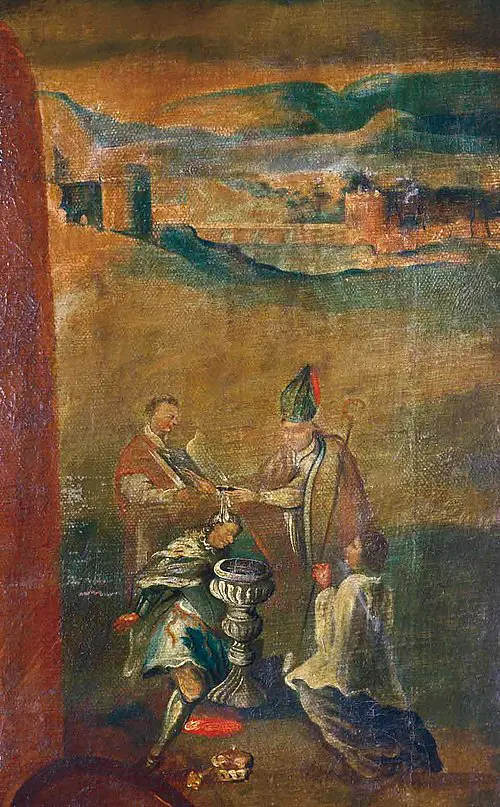
The tribal dukedoms were well-established and served as an excellent foundation for building something more central and uniform. This opportunity was recognized by one of the older dukes – Mindaugas. Not much is known about his origins, or his title came from.
The known sources suggest that he was referred to as the “elder duke,” seemingly meaning that he inherited his title. He must have had the gift of persuasion – a very handy trait combined with strategic thinking and bravery.
Mindaugas expanded his influence across the lands, towering over other lords who started following him and forming an alliance. By 1236 he asserted himself over all significant and powerful Lithuanian lords, including his brother.
Mindaugas accepted Baptism sometime about 1251 and, according to the bull written by Pope Innocent IV, was supposed to be crowned. Although it is not known for sure whether the coronation took place, it is suspected that, if it did, it happened on July 6, 1253.
In today’s Lithuania, this day is a bank holiday and is celebrated as the Day of the Statehood. It might have seemed that the future of the newly formed state was looking bright. However, the assassination of the King in the Autumn of 1263 ended the history of Lithuania’s crowned kings. For good.
A game of chess
What did remain, however, was Mindaguas’s legacy. He was known not only as the King of Lithuania but also as the Grand Duke of Lithuania. The late king’s assassination was connected with the will of the nobles to keep Lithuania pagan. Unfortunately, in the changing reality of the world, this was a utopic dream, hard to realize. Gediminas, the next Grand Duke, seems to have been aware of that fact. He reunified Lithuania in 1290.
Moreover, he gave his daughter’s hand to the Polish King – Casimir the Great. In 1333 Aldona became the Queen of Poland, and thus how the ties between these two countries were formed. The constant threat from the Teutonic Order also helped the sometimes shaky alliance. The Teutonic Knights were persecuting both Polish and Lithuanian nations and had their hungry eyes constantly turned in the direction of their lands. However, Gediminas’s seven ambitious sons were not eager to resign from their power and influence in favor of one ruler.
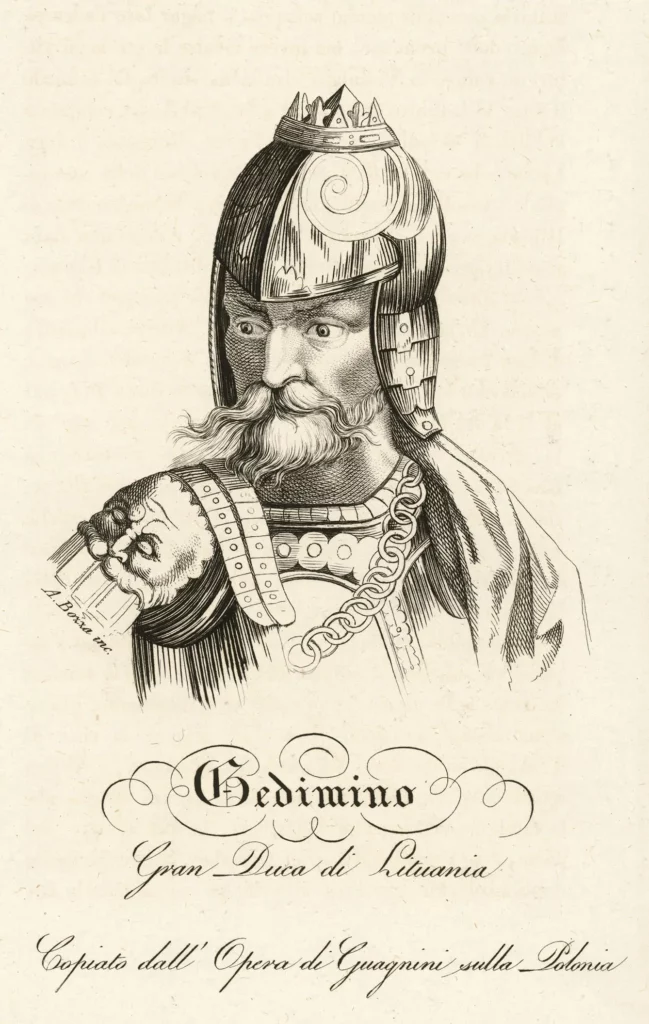
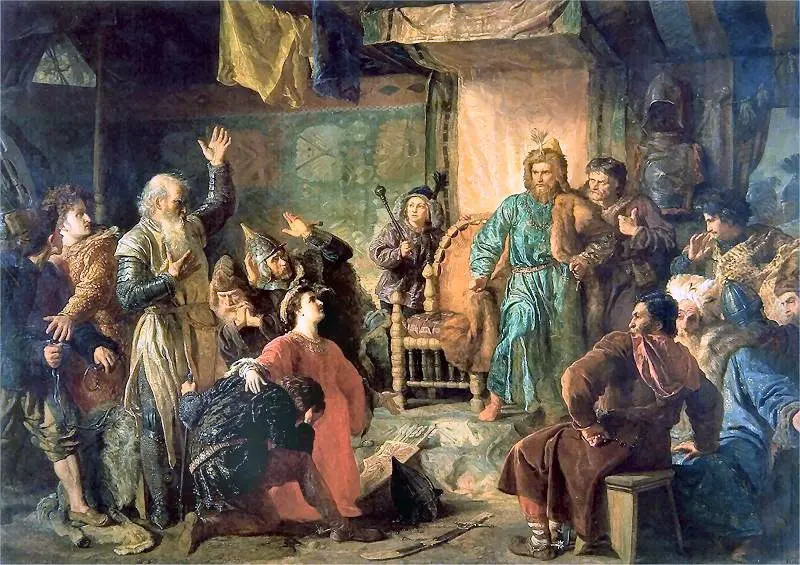
Gediminas divided the land of Lithuania into seven districts, which he divided between his seven sons, leaving the youngest one, Jaunutis, in charge of Vilnius. He proved a rather poor ruler, and his brother, Algirdas, took over (with the help of Kęstutis, who was also one of the brothers) and declared himself the Grand Duke of Lithuania. Upon his death in 1377, the Grand Duke’s office was handed down to his son, Jogaila, which was somewhat awkward since Kęstutis was still alive.
Jogaila’s time as the Grand Duke was problematic from the onset. Troubled by internal tensions and constant raids by the Teutonic Knights, he tried to please the latter to convince them to stop invading his land. In 1381, his uncle, Kęstutis, drove Jogaila away and took the title of Grand Duke – a move that cost him his life. Already in 1382, the tables had turned, and Jogaila managed to capture his treacherous uncle, as well as his eldest son, Vytautas. Kęstutis was imprisoned and killed, but his son escaped and found shelter provided by the Teutonic Order. Things did not look great for Jogaila.
Union of Two Warriors
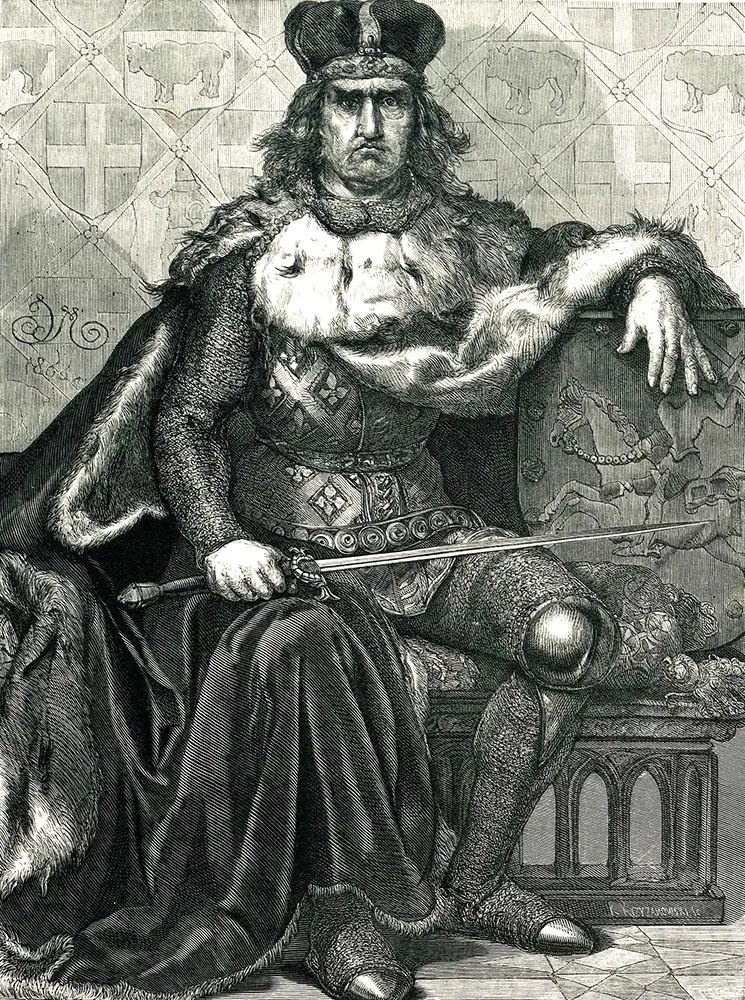
Jogaila was running out of options. The last viable ones he remained with were either a union with Moscow and Orthodox Christianity (favored by Eastern dukes) or Roman Catholicism and a union with Poland (strongly preferred by those living in the central lands). Jogaila opted for the latter solution. In 1385 he agreed to marry Hedwig, the King of Poland (the only female ruler to carry this title). In 1387 Jogaila formally turned Lithuania into a Christian country and granted extensive privileges to all Lithuanian nobles who followed Christianity.
He also managed to patch things up with this cousin (admittedly, after three years of a brutal civil war), and, in effect, Vytautas was able to make a return as Lithuania’s ruler. The introduction of Roman Catholicism also meant that the Teutonic Order had no interest anymore in invading Lithuania. They, however, were of a different opinion. It took the great defeat of the Order in the 1410 battle of Grunwald for its grip on that part of Europe to diminish slowly.
Lithuania flourished under Vytauta’s rule, to which the alliance with Poland contributed. However, it is essential to state that it was a separate entity and the office of the Grand Duke of Lithuania was the desired position, which became part of several further bargains between the two countries. It was not until 1569 that the two nations became formally one Kingdom – The Polish and Lithuanian Commonwealth.
The European leader
The Commonwealth lasted until the Partitions of Poland in 1795. The Golden Era for the new political entity fell at the turn of the 16th century and throughout the 17th century. However, such a tight union came at a price. In this case, it was the slow Polonisation of Lithuania. Although a separate state, equal in the face of the law, the Polish language prevailed, and the Lithuanian nobles were very often outvoted when it came to important decisions regarding the future of the two states.
Nevertheless, Lithuania’s lands benefited from the union, and the Commonwealth was among one of the greatest Kingdoms of the Old Continent, very often taking the lead in important matters (such as religious freedom, formally introduced in 1573). Unfortunately, as the Jagiellonian dynasty ended when Sigismund II Agustus died in 1572 without producing an heir to the throne, the era of election kings started, which ultimately, centuries later, led to weakening the position of the Commonwealth and its ultimate partition between the kingdoms of Russia, Prussia, and Austria.
Russian rule and a new Lithuania
Lithuanian lands mainly fell under the Russian partition. Infamously known as the roughest and most merciless rule, Russians tried to eradicate Lithuanian culture by imposing the Russian language and culture. Lithuania was treated harshly due to its people’s fierce and rebellious nature. The strong national revival of the 19th century brought hope after failed uprisings and a tighter grip on the imposed Russian authority. But it was only after the First World War that some independence returned to the lands.
The end of the First World War by no means meant peace for Lithuanians. On one side, there was the Bolshevik revolution coming from the East. From the West, Poles, eager to see the union last, were adamant about keeping Vilnius and its vicinities, which were inhabited by a large number of Poles. The new Lithuanian government, however, did not see eye to eye with the Polish plan.
All started to unravel at a galloping paste. In December 1918 Lithuanian government fled to Kaunas, and the Bolsheviks took Vilnius. The Poles tried to push the Bolsheviks out. Still, they did not succeed until after the Bolshevik’s famous defeat during the Battle of Warsaw that took place on August 15, 1920, and the fortune smiled to the European civilization when the Bolsheviks were forced to retreat. Vilnius, however, did remain in Polish hands.
The dictatorship of Smetona
Antanas Smetona was a Lithuanian intellectual, a journalist, and a nationalist. He held a strong grudge against the Poles and Russians alike. As much as his dislike could be polemicized, his passion for reinstating the Lithuanian culture and language is completely understandable.
Smetona was the President of Lithuania in the years 1919-1920 and then from 1926 (as a result of the Lithuanian coup d’état) until 1940. He ruled with an iron fist, claiming dictatorship in 1929. Trying to reconstruct a strong state was a dubious task when under the external (and internal) communist threat, as well as facing the growing power and appetites of Nazi Germany. After the Second World War outbreak, and due to the Ribbentrop–Molotov pact, Russian forces ultimately entered Lithuania in 1940. Smetona was forced to leave the country in June of that year.
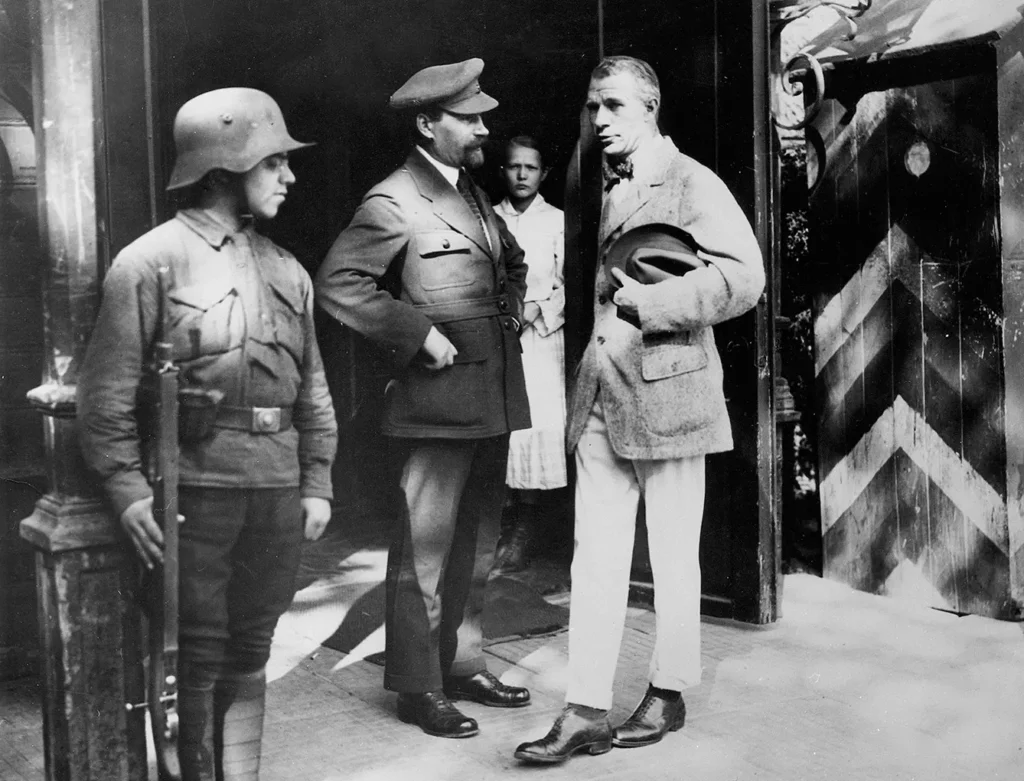
WWII and Communist Rule
As with all the countries of that region, the end of the Second World War did not bring peace but further occupation by the Soviet regime. Similarly to the Poles, Lithuanians tried to free themselves from the Soviet grip, and partisan movements were formed. Known in Lithuania as the “Forest Brothers,” they put up a heroic fight, despite being outnumbered and solitary.
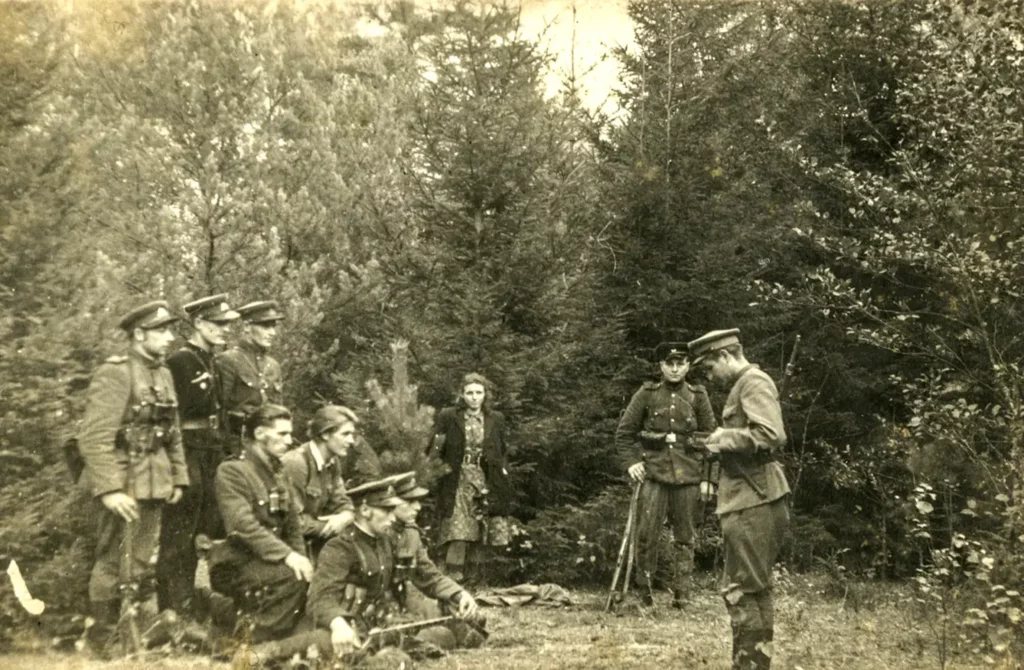
Between 1945 and 1952, the Soviets killed and deported a further 250,000 Lithuanians, according to official accounts. Still, as was the case with other occupied lands – it is to be expected that the actual number of victims was higher than that. It was not until 1989 that the winds of history were about to change.
Push for independence
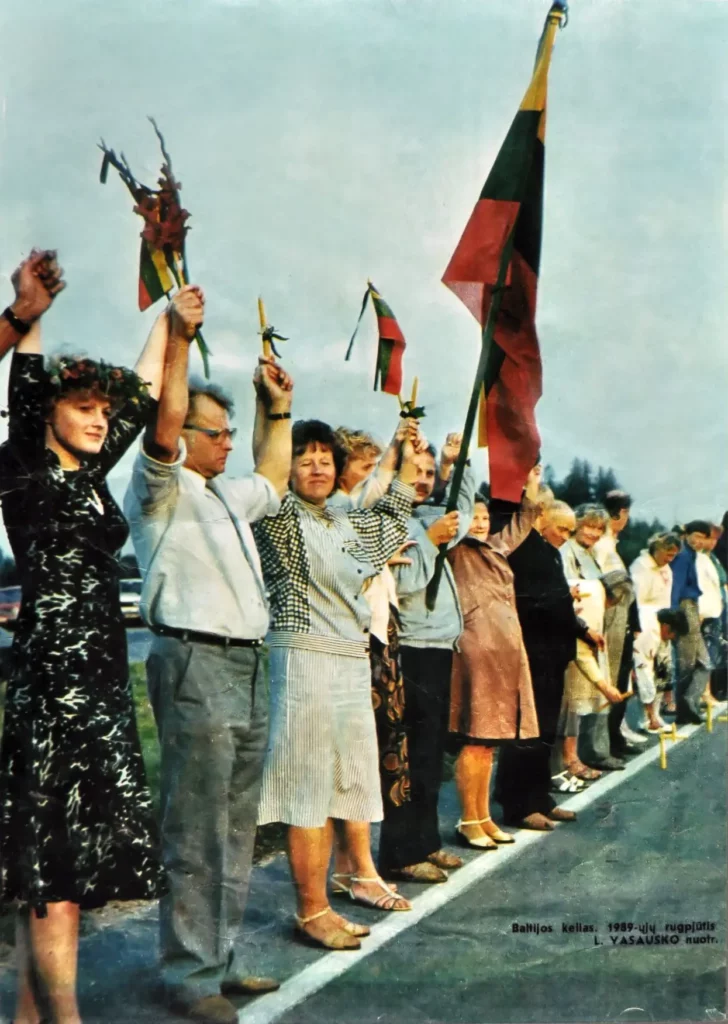
In 1989 a political organization known as Sąjūdis (formerly known as Lietuvos Persitvarkymo Sąjūdis) [Movement, formerly: Reform Movement of Lithuania] won the vast majority of Lithuanian seats in the USSR Congress of People’s Deputies. The people felt that their fate was about to change. Fifty years after the Ribbentrop-Molotov pact, a chain was made in an attempt at a peaceful demonstration to bring attention to the persisting Soviet occupation of the Baltic States.
Approximately two million people formed a chain of human hands connecting three capitals: Riga, Tallinn, and Vilnius. On March 11, 1990, Lithuania declared itself an independent state, much to Russia’s disapproval. The Soviets presented Lithuanians with an ultimatum – stop now or face the consequences. But Lithuanians did not think of stepping back. Unfortunately, the Russians were not bluffing.
The Soviet leader at the time, Michail Gorbachev, issued economic sanctions against Lithuania and installed Russian troops in several districts of Vilnius. The conflict escalated, and in January 1991, the Parliament and Vilnius TV tower were stormed, killing 14 people. It did not help, however, and the USSR was forced to formally recognize Lithuania’s independence on September 6, 1991.
Standing strong
Reconstruction of a fully independent state took time and effort, as was the case with other post-Soviet republics. The country was troubled by internal tensions, suffered a collapse of the baking system in 1995-96, and was corroded by corruption. Thankfully, in 1998 things took a turn for the better with the election of Valdas Adamkus for President. Popular, Adamkus was the one to promote the idea of Lithuania becoming a member of the EU and NATO.
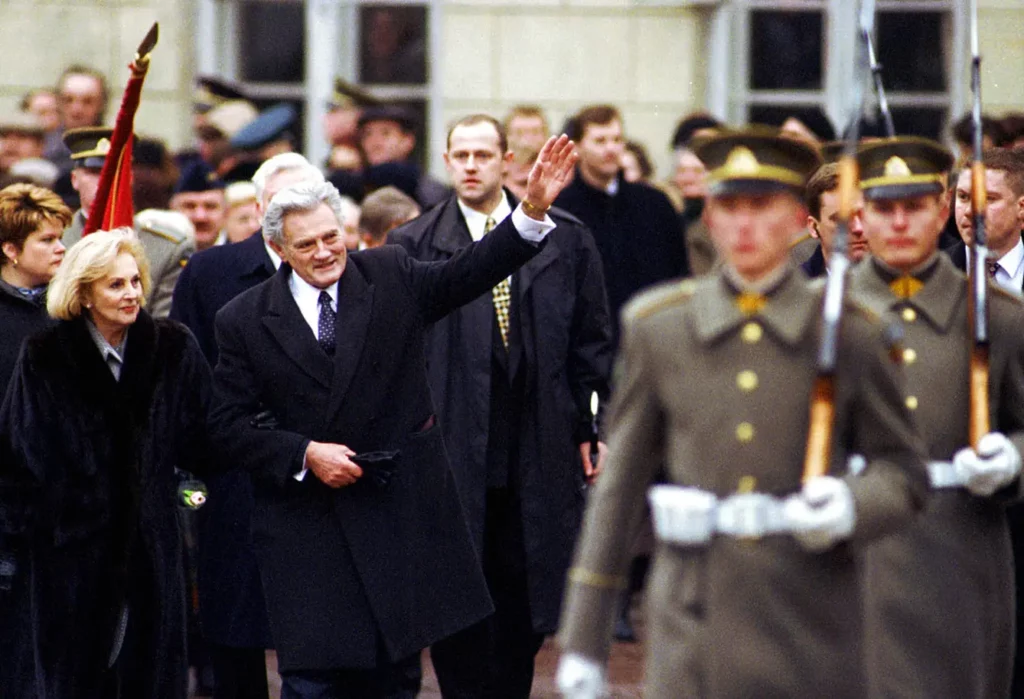
He had the honor of seeing this dream fulfilled in 2004 when he was re-elected to the Presidential Office. In 2009, he was succeeded by Dalia Grybauskaitė. Lithuania is a flourishing country and a strong voice in Central and Eastern Europe. It managed to patch up the relationship with Poland and, together with the other Baltic States, it stands strong, emphasizing the importance of freedom, independence, truth, and loyalty of the nations for peace in the region to be enjoyed by coming generations.


